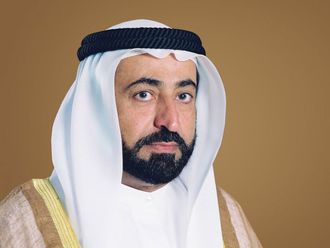Abu Dhabi: A flight campaign by Japanese researchers is assessing the microphysical and chemical properties of clouds and the potential for cloud seeding in the UAE. The UAE Research Programme for Rain Enhancement Science announced that a team is currently conducting field studies in the Al Ain region using an aircraft that travelled 12,000km over Asia and the Middle East, from Nagoya to Al Ain, according to a press release issued on Monday.
Led by Professor Masataka Murakami, one of the programmes’ first cycle awardees, the Japanese team is collaborating closely with scientists from the National Centre of Meteorology (NCM), which manages the UAE Research Programme for Rain Enhancement Science. The project is currently analysing the microphysical and chemical structures of clouds suitable for seeding and their occurrence frequency over the eastern mountain areas of the UAE, and investigating seeding effects through laboratory tests, aerial and ground-based measurements.
Dr Abdulla Al Mandous, Director of NCM, said NCM is making every effort to ensure the successful completion of all six projects currently being carried out by programme awardees. “In doing so, we are seeking to advance the scientific community’s understanding of rain enhancement and ultimately aiding the common international quest for water security.”
Comprising 20 experienced scientists and an aircraft crew and support staff, Professor Murakami’s team has been carrying out the geophysical mapping of seedable clouds in the UAE by utilising the comprehensive local meteorological data compiled by NCM scientists. Building on this knowledge, the Japanese team has gathered additional information on vertical profiles of local temperature, humidity, cloud water and precipitation particles from ground-based measuring equipment including microwave radiometer and Doppler radar. The team is now deploying its own custom-designed aircraft fitted out with advanced scientific instruments to carry out further experiments based on the previous fieldwork. The aircraft carries out daily flights to assess the properties of local clouds, the effect of seeding materials injected into the clouds and any resultant changes in rain precipitation. The flight campaign is taking advantage of the more stable meteorological conditions prevalent in the summer season compared to the more changeable weather of the winter season. NCM is actively collaborating in this effort by providing one of its Beechcraft King Air C90 aircraft to take measurements. After the NCM aircraft disperses hydroscopic seeding particles into suitable clouds, the Japanese aircraft measures the effectiveness of the particles.
Alya Al Mazroui, director of the programme, said: “Professor Murakami’s highly promising field project could do much to enhance our knowledge of local weather patterns and rainfall potential in the target region. The close coordination between the Japanese and NCM teams is a good example of the international collaboration that is essential to the opening of new horizons in the science and technology of rain enhancement.”












